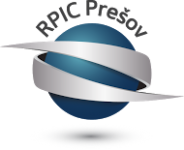Summary:
To reduce the energy consumption in private or collective buildings, a Belgian inventor developed a process to improve boiler burners based on combustion by controlled ionization. The technology involves the embedding of metallic parts in the combustion area to alter the electric field, in order to produce more energy. A commercial partner with technical assistance or a license contract is requested to manufacture, integrate or/and sell the system.
Description:
Energy consumption in private house or collective buildings (schools, administrations, sport infrastructures, etc.) is nowaday a big challenge in the framework of European green deal.
The inventor is a civil engineer, located in Belgium, interested by the improvement of boiler systems. In March 2020, the research and development led to an European patent, followed by a US one.
The invention provides more energy for a given amount of fuel (solid, liquid or gas) : +/- 50% observed in certain cases compared with the traditional methods.
Metallic pieces are embedded in the combustion area. The upper side of the metal parts is near the flames and thus is hot. The lower side of the same metal parts is at the air inlet and thus is cold. This difference of temperature inside the metal part creates an electric field in the part.
At the beginning of the combustion, electrons and cations (carbon; hydrogen) are released from the base fuel. The atoms of oxygen in the surroundings catch the electrons, become oxygen anions thus negative and then are attracted by the positive cations (carbon; hydrogen). The shock gives the energy. The problem is that there could be recombinations between the cations and the electrons continuously produced. The effects of these recombinations are easy to understand: less shocks and less violent shocks because a shock between a C++ (an atom of carbon which has lost 2 electrons and thus becomes 2 times positive) and an O- (an atom of oxygen which has caught an electron and became one time negative thus) is less violent than a shock between a C++++ and an O--.
The power depends on the tension between the atoms. High voltage gives high energy during the shock.
So the idea was to separate the electrons and the cations (carbon; hydrogen) when they are just produced during the first step of the combustion.
For instance, if a metallic part is put near the combustion; this metallic piece is long enough to have one end near the flames (the hot end) and the other end at the entrance of the oxygen (the cold end). Naturally, the electrons from the hot side of the part will move to the cold side, creating a positive pole near the flames and thus attracting the electrons produced by the fuel in combustion. These electrons also move to the cold side of the metallic piece where they are ejected, by tip effect, on the entering oxygen. This oxygen (O2) becomes anion (O--) and is injected in the combustion chamber. So the free average route of the O-- is greater before the shock. There are more shocks because there are less recombinations. So energy produced is greater.
The patented invention is looking for partners to be manufactured and commercialized. The inventor is ready to discuss about a licence agreement or a commercial partnership with technical assistance, with some partner companies interested by improving their own boilers or their heating system / service.
Type (e.g. company, R&D institution…), field of industry and Role of Partner Sought:
The partner sought should be a company, active as an energy producer (gas, oil, coal) or a manufacturer of boiler burners.
The final consumer target is private house buildings as well as "community / collective" buildings like hospitals, schools, powerplants etc. which would like to reduce their consumption of energy.
The partnership would be a license agreement or a commercial partnership with technical assistance : the objectives of the collaboration are
- to go on and finalize the testing phase of the system together (with the inventor's support)
- to integrate the solution in the manufacturing or service providing of the partner and to sell it to the partner's clients.
The improvement of existing or already installed burners is possible, as well as the direct integration in new manufactured burners.
Stage of Development:
Available for demonstration
Comments Regarding Stage of Development:
Tests have been made on prototypes, on open furnace and on fuel burners. Results and description of the tests are available for information. The invention is compatible with boiler burners based on liquid, gaseous or solid fuels.
European patent
US patent
IPR Status:
Patents granted
Comments Regarding IPR Status:
Patent licenses to be negotiated
External code:
TOBE20211109001








